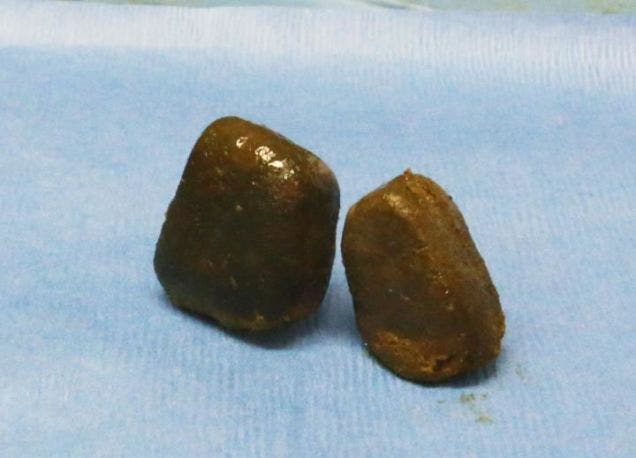The adorable wombats have a unique ability which has puzzled biologists for quite a while now: they make cubical poop.
Out of all the superpowers in the world, that seems like the strangest one. It’s so strange, in fact, that Patricia Yang, a postdoctoral fellow at the Georgia Institute of Technology, didn’t believe it at first.
“The first thing that drove me to this is that I have never seen anything this weird in biology. That was a mystery,” said Yang. “I didn’t even believe it was true at the beginning. I Googled it and saw a lot about cube-shaped wombat poop, but I was skeptical.”
Yang studies how fluids, including blood, processed food, and urine, move about inside the bodies of animals — so she was perfect for the task. She carried out an analysis of wombat digestive systems on individuals which had been euthanized following motor vehicle collisions in Tasmania, Australia.
The researchers found that near the end of the digestive system, the poop turned from liquid to solid, and that’s when it becomes a cube. The group believes that the elasticity of the wombats’ intestinal walls allow for this process to take place, and at quite a high pace — wombats typically produce 80-100 cubes per night.

Wombats used their squared scat to stack pieces on top of each other, making them more visible as a territory marking. Because the sides are flat, they’re also less likely to roll away or be blown by the wind. However, this ability appears unique in the animal world. Although cubes and other squared surfaces are quite common in industrial and some geological processes, they’re almost inexistent in the biological world, which makes the topic much more attractive, both for researchers and the general public.
“We currently have only two methods to manufacture cubes: We mold it, or we cut it. Now we have this third method,” Yang said. “It would be a cool method to apply to the manufacturing process — how to make a cube with soft tissue instead of just molding it. We can learn from wombats and hopefully apply this novel method to our manufacturing process,” Yang said. “We can understand how to move this stuff in a very efficient way.”
Co-author Scott Carver says that public interest, as well as the unusual nature of the problem, drove this study.
“There is much general interest from the public, both in Australia and internationally, about how and why wombats create cube-shaped feces. Many ideas, some more entertaining than others, have been put forward to explain this, but until this study nobody had ever investigated the cause. This has been a fantastic collaboration which shows the value of interdisciplinary research for making new scientific discoveries.”
The study “How do wombats make cubed poo?” was presented at the Annual Meeting of the APS Division of Fluid Dynamics.



